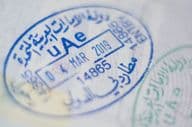Dubai Unveils New Architectural Strategy

Dubai Introduces Unified City Image Strategy: New Architectural Guidelines and Six-Zoned Urban Structure
Dubai's cityscape has reached a new chapter. The city administration has officially approved Dubai's new architectural image, which will provide a unified visual framework for infrastructure and urban development projects in the future. The new strategy follows the guidelines of the Dubai 2040 Urban Master Plan, creating harmony between the city's historical heritage and modern development. The aim of the concept is not only to aesthetically unify the city but also to promote sustainability, from material usage to lighting systems.
City Structure Divided Into Six Zones: A New Approach to Urban Planning
A key element of the fresh strategy is the division of Dubai into six zones. This division not only denotes physical differences but also defines the image and functional characteristics suitable for each zone. Below are the six zones and their main features:
Residential Zones:
These areas are characterized by warm colors and materials inspired by the local environment. The focus of the design is to provide homeliness, tranquility, and privacy, so residents can live in a comfortable, harmonious environment.
Rural Zones:
Light, earth-toned shades and organic materials dominate. The design, built on natural elements and agricultural character, aims for harmonious coexistence with the natural landscape.
Industrial Zones:
Neutral colors, robust, functional materials, and simple, clean forms make up the image of the industrial zones. The main focus is on efficiency and durability.
Mixed-Use Zones:
In these zones, the joint presence of residential and commercial functions is typical. The image here emphasizes balance and integration, aiming for community and private spaces to harmoniously fit together.
Historical and Artistic Zones:
Traditional architectural elements, local decorations, and the display of cultural heritage characterize these city parts. Maintaining an authentic atmosphere is the primary goal.
Luxury and Spectacle Zones:
Contemporary architectural forms, unique materials, and modern urban facades dominate here. The aim is to create uniqueness and visual appeal.
The Dubai Urban Challenge – Global Creativity with Local Identity
As part of the city's visual renewal, the Roads and Transport Authority (RTA) announced a global competition called Dubai Urban Challenge, aimed at creating a new identity for Dubai's roadways. More than 500 artists and designers from 91 different countries applied for the competition. At the award announcement, three outstanding projects emerged:
A Thread Through Time – a concept from the United Kingdom showing the layers of time in Dubai's cityscape.
Breathing Masonry – a Saudi Arabian design showcasing the living, breathing urban fabric.
Echo – an Argentine project weaving urban moods and nostalgic elements together.
These projects reflect Dubai's aspiration to be a global city while possessing a local identity, not just in their visual world but also in their ideology.
Dubai Tunnels Project: The City's Tunnels Become Art Spaces
One of the most spectacular elements of the visual renewal is the Dubai Tunnels initiative, during which 18 tunnels will be transformed into artistic installations in three different phases:
First phase: three tunnels along Al Khaleej Street, Umm Suqeim Street, and Oud Metha street will receive a new image.
Second phase: five tunnels will be renewed, including the areas around the Museum of the Future Street, Trade Centre Street, and Al Sukook Street.
Third phase: ten more tunnels will be decorated along Al Wasl Street, Jumeirah Street, and Umm Suqeim Street.
The tunnels will be enriched not just with paintings or murals but also with smart lighting systems that are not only energy-efficient but also dynamically adapt to traffic and environmental lighting conditions. The new coatings resist moisture and temperature fluctuations, ensuring the preservation of artistic values in the long term.
Balance of Sustainability and Aesthetic
The newly accepted architectural guidelines serve not just an aesthetic purpose but also play a significant role in sustainability. In the design of various urban elements – such as bridges, street lighting poles, sidewalks, and green areas – the efficiency of material usage, reduction of ecological footprint, and energy efficiency must always be considered.
The goal is for Dubai's future cityscape to not only be visually pleasing but also environmentally sustainable and functional in the long term.
Summary: Balance of Vision and Tradition
Dubai's new architectural image conveys a clear message: the city not only wants to remain at the forefront of the world in technological and economic terms but also seeks to represent its unique cultural character. The six-zoned urban structure, the results of the Dubai Urban Challenge, and the Dubai Tunnels project all point towards Dubai being a modern metropolis that does not forget its roots, while boldly building for the future. The triad of sustainability, artistic expression, and urban functionality defines the image that the world will now form of Dubai.
(The article is sourced from Dubai Urban Challenge winning entries.)
If you find any errors on this page, please let us know via email.


